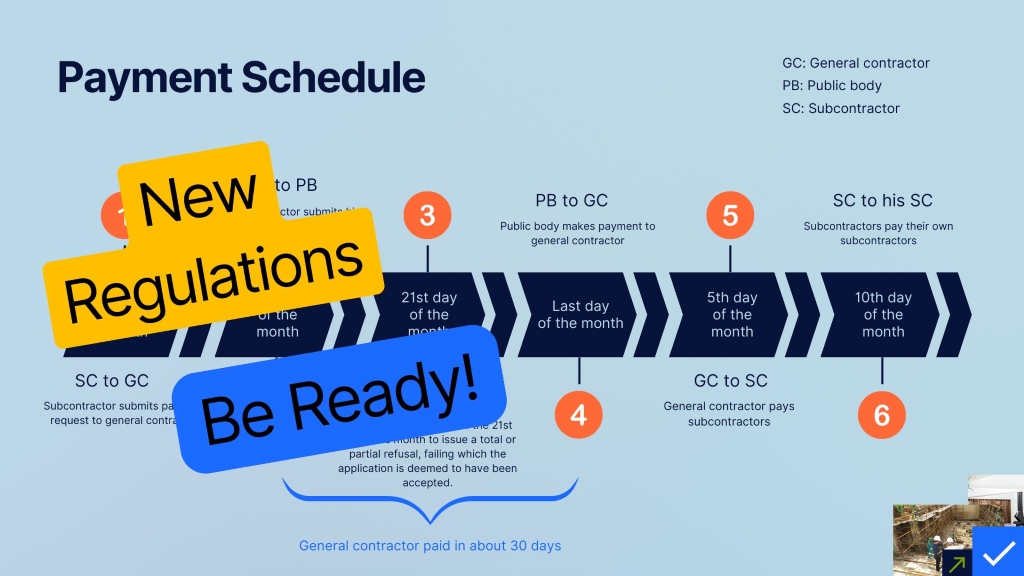In the world of project management, the terms project funding and project budget are often used interchangeably. However, it's crucial to understand that these concepts, while related, represent distinct realities and have different implications for the success of your projects.
Project Funding: What you can spend
Project funding represents the total amount of money an organization or project sponsor makes available to the project manager for project expenditures. Imagine it as the financial envelope you are authorized to use or spend for your project.
Several elements characterize project funding:
- Multiple Sources: A project can receive funds from various sources, and some of these sources may be earmarked for very specific project expenditures.
- Phase Funding: For large-scale projects, funding is often allocated in stages. For example, initial funding might cover professional services, while additional funding is released later for construction work. This implies that the ability to commit funds is limited to the funding available for the current phase, not the total project budget (more on this later!).
- Potential Revisions: As the project progresses, these funding sources may be adjusted (increased or decreased) based on updated project expenditure forecasts or the organization's financial constraints.
- Annual Planning: In many organizations, major project funding is often planned during annual budgeting exercises and is tied to funding envelopes separated by fiscal year.
In short, funding is the monetary limit that you must not exceed and that is granted to you to carry out your project.
Project Budget: What you plan to spend
The project budget, on the other hand, is a detailed estimate of what you plan to spend to achieve the project objectives. The budget breaks down expenditures into specific budget line items, reflecting the nature of the costs thus why it’s also frequently referred to as the ‘’CBS or Cost Breakdown Structure’’.
Here are some common characteristics of a project budget:
- Detailed Breakdown: A detailed budget breakdown allows for precise tracking of expenditure progress. You can track concrete items like materials ordered/received, labor hours spent, assets purchased, services invoiced, etc. However, be aware that there's always an important balance between a budget that's too precise (difficult and tedious to track and update) and one that's not precise enough (which can hinder expenditure visibility or complicate reporting).
- Funding-to-Budget Line Item Linkage: A well-structured budget will allow for the isolation of certain expenditures or budget line items that can only be funded by specific funding sources. If this applies to your project, consider grouping these expenditures to compare them accurately against the related funding sources.
- Overlap of Fiscal Periods: For multi-year projects, these expenditures can span several fiscal funding periods and be funded by one or more funding sources from different fiscal years.
The budget is your spending plan. It helps you anticipate and organize your project costs.
The Crucial Role of the Project Manager
A good project manager must master both their project funding (and its allocation rules) and their project budget. This dual understanding is essential for:
- Ensuring Sufficient Funding: Making sure the project has the necessary funds to be completed according to the organization's funding rules.
- Controlling Actual Expenditures: Verifying that actual expenditures align with the budgeted amounts and allocated funding.
Managing gaps between project funding and budget
In a simple case, the project funding is sufficient to cover the total project budget. However, for several reasons, this may not always be the case, especially when funding is allocated in phases.
In these situations, some organizations may authorize a project to start even if the total available funding is less than the total project budget. This approach is often based on the anticipation that additional funding will be granted in future fiscal years, or that certain expenses can be avoided or stopped if additional funding is not secured.
However, it is strongly recommended to avoid committing to significant expenditures (e.g., awarding a contract) without having the necessary remaining funding. This can lead to delicate situations and compromise the project's viability.
In all cases, refer to your organization's regulations and processes to assess whether you can proceed without the full funding of your budget.
The importance of robust project management software
To effectively manage these realities, it is essential for an organization to acquire a robust project management software. Software like Aidi allows the organization to:
- Assign funding to each project to ensure clear visibility of available funds for each initiative and link this funding to their annual funding envelopes.
- Break down the budget into different budget line items to precisely control expenditures based on allocated funding and segment expenditures attributable to specific funding.
A flexible software like Aidi will also allows you to configure it according to your internal rules and processes. Do you want to start a project even if the initial funding is less than the budget? No problem, Aidi will ensure you don't commit to expenses without the remaining project funding being available to fully cover the commitment.
By understanding and effectively managing the distinction between project funding and project budget, you maximize your chances of successfully completing your projects and optimizing your financial resources.
Would you like to understand more about how a solution like Aidi can help you better manage your project funding and budgets? Contact us without delay!






